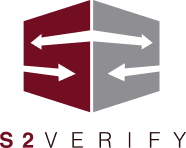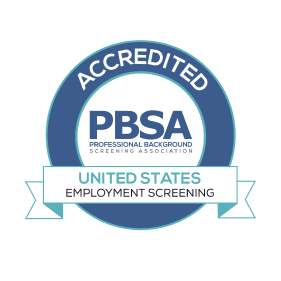AI Recruitment: Ensuring Compliance with EEOC and FCRA Standards
The evolution of artificial intelligence has brought about transformative efficiencies for HR professionals, recruitment managers, and talent acquisition specialists. From automated resume screening to sophisticated chat-to-apply bots, AI tools streamline traditionally time-intensive tasks, allowing organizations to attract and evaluate candidates at unprecedented speed.
However, with these technological advances comes an amplified responsibility to align hiring practices with regulatory frameworks, particularly those established by the Equal Employment Opportunity Commission (EEOC) and the Fair Credit Reporting Act (FCRA).
Missteps in this arena can expose organizations to significant legal, reputational, and operational risks.
AI Applications In Recruitment
AI-powered tools have become integral to the recruiting process. They enable organizations to manage high application volumes efficiently while enhancing candidate experience and decision-making.
These tools include:
- Resume Screening Algorithms: These systems utilize machine learning to analyze resumes and identify top candidates based on predetermined criteria. By parsing vast quantities of data, they help hiring teams reduce bias and focus on objective qualifications.
- Chat-to-Apply Bots: Chatbots guide candidates through the application process, answer FAQs, and collect information in real-time. They ensure a smoother, more interactive experience, which can significantly reduce drop-off rates among applicants.
- Predictive Analytics: These AI-driven models evaluate candidate suitability for roles based on historical hiring data, performance metrics, and cultural fit indicators.
- Video Interview Platforms: AI analyzes facial expressions, tone, and word choice during video interviews, providing insights into candidate suitability.
While these tools undoubtedly boost efficiency, they must be carefully implemented to ensure compliance with key regulations.
Navigating EEOC Guidelines
The EEOC enforces federal laws prohibiting hiring discrimination based on race, color, religion, sex, national origin, age, disability, or genetic information. When improperly designed or deployed, AI systems risk perpetuating biases in historical data.
Here’s how organizations can mitigate such risks:
- Data Auditing: Regularly audit datasets to train AI systems for potential biases. For example, if past hiring data disproportionately excludes women or minorities, the algorithm may replicate these patterns.
- Transparent Decision-Making: Ensure that hiring managers understand how AI recommendations are generated. Transparency not only aids compliance but also builds trust among stakeholders.
- Bias Mitigation Strategies: Employ counterfactual fairness techniques to test how AI tools would respond if a candidate’s demographics were altered. If outcomes change significantly, corrective actions are necessary.
- Regular Updates: Refine AI models to align with evolving EEOC guidelines and societal norms.
FCRA Compliance In AI Hiring
The FCRA governs consumer reports, including background checks, in employment decisions. It ensures that candidates are treated fairly and that data inaccuracies do not adversely affect hiring outcomes.
AI tools must operate within the following FCRA requirements:
- Consent and Disclosure: Before conducting background checks, employers must obtain written consent from candidates and disclose the purpose of the checks.
- Adverse Action Procedures: If an AI tool flags a candidate for rejection based on background information, employers must follow the FCRA-mandated adverse action process:
- Provide the candidate with a pre-adverse action notice, a copy of the report, and a summary of their rights.
- Allow time for the candidate to dispute inaccuracies.
- Send a final adverse action notice only after the dispute period ends.
- Accuracy and Relevance: Employers must ensure that AI-generated reports are accurate and relevant to the hiring decision. Partnering with trusted screening providers like S2Verify—renowned for meticulous data accuracy—helps meet this requirement.
Balancing Efficiency and Compliance
While AI offers unparalleled efficiency, organizations must balance automation and human oversight.
Here’s how hiring managers and HR professionals can safeguard compliance while leveraging AI tools:
- Vendor Vetting: Choose AI vendors prioritizing compliance, transparency, and data security. Ensure they adhere to industry standards, such as the Professional Background Screening Association (PBSA) accreditation.
- Human Oversight: Integrate human review into critical decision points. While an AI tool can shortlist candidates, a human should evaluate cultural fit and soft skills.
- Customizable Solutions: Opt for AI tools that allow customizable parameters, ensuring alignment with your organization’s hiring policies and regulatory obligations.
- Continuous Training: Educate hiring teams about the ethical use of AI, compliance requirements, and the importance of unbiased decision-making.
Building Candidate Trust
AI tools must comply with regulations and foster trust among candidates. Transparency about how AI influences hiring decisions is essential. Clear communication ensures that candidates feel valued and treated fairly, regardless of the outcome.
Organizations should also provide candidates access to their data and offer avenues for recourse if they suspect inaccuracies or biases. This commitment to fairness strengthens an employer’s reputation and supports long-term talent acquisition goals.
The Role of S2Verify In AI Recruitment Compliance
Our advanced background screening services exemplify how technology and compliance can coexist. By leveraging automation while adhering to stringent legal standards, we help organizations navigate the complexities of EEOC and FCRA compliance. Our integration capabilities and dedication to accuracy ensure that AI recruitment processes are efficient and lawful.
Future-Proofing AI Recruitment
As AI technology evolves, regulatory frameworks will, too. Proactive measures today can safeguard against future risks. Organizations can create equitable, compliant, and effective hiring processes by fostering collaboration between legal, HR, and technology teams.
AI-driven hiring has the potential to revolutionize talent acquisition, but its success hinges on careful implementation and unwavering adherence to compliance standards. By prioritizing fairness, transparency, and accuracy, organizations can harness AI’s power to build diverse, high-performing teams while remaining steadfastly aligned with EEOC and FCRA requirements.







